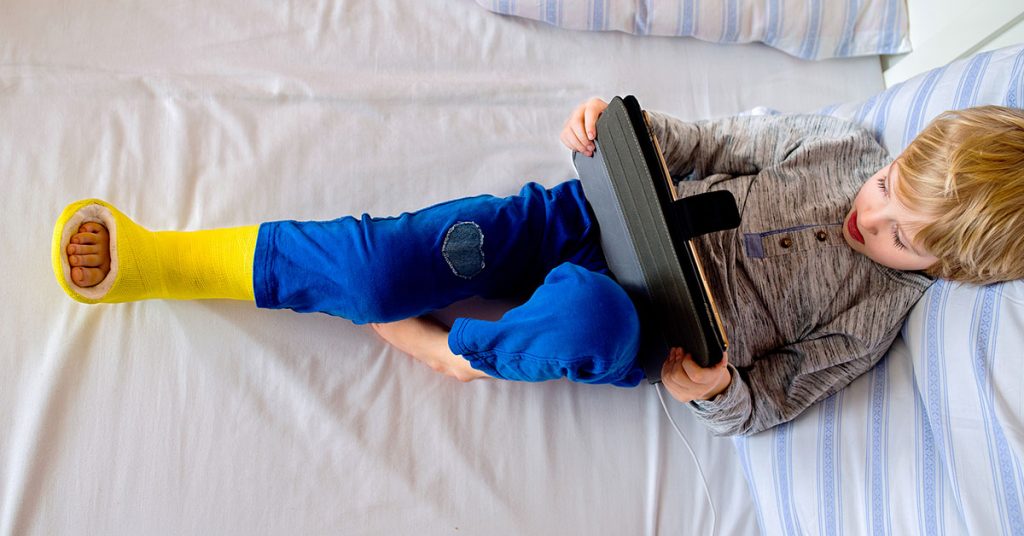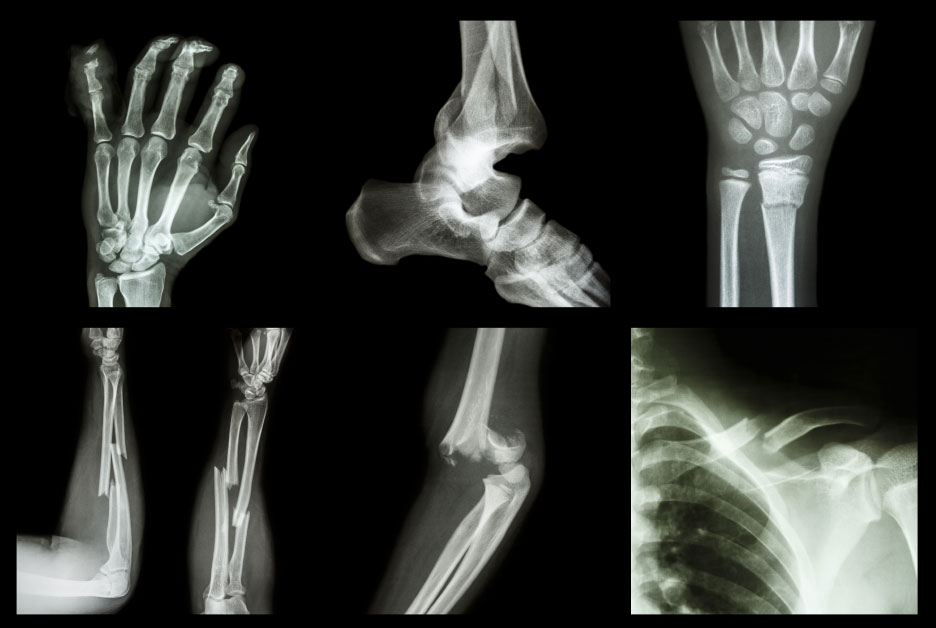
In the United States, approx. 6.3 million fractures occur each year, and over 40% of these are at home incidents. Broken bones are a common occurrence, especially among children and people who play sports regularly. There are about 3.5 million visits made to emergency rooms for fractures each year. Broken bones may not be life-threatening but can cause a lifetime of complications. (OSU.EDU, 2020)
What Constitutes a Broken Bone?

A broken bone or bone fracture is a medical condition in which the bone’s continuity is obstructed. Broken bones are common in the upper limbs like the arms, elbows, wrists, fingers, and lower limbs, including the legs, knees, ankles, and feet.
A high percentage of bone fractures occur due to a high force impact or stress. However, a fracture or break can be the result of a few medical conditions that weaken the bones, such as osteoporosis and some cancers. (Brazier, 2017) A fracture caused by a medical condition is known as a pathological fracture.
Intensity of Pain
Most fractures have intense pain at the time of initial injury. It may become worse when you move or touch the injured area. In some cases, you may even pass out from the pain, feel dizzy or chilled from shock. Other potential symptoms include:
- A snap or grinding sound when the injury occurs
- Swelling, redness, and bruising in the injured area
- Difficulty supporting weight with the injured area
- Visible deformity in the injured area
(Giorgi, 2017)
The severity of a fracture depends on the fracture type and location. Severe fractures can have complications if not treated promptly, including damage to blood vessels or nerves and infection of the bone (osteomyelitis) or surrounding tissue.
Are You at Risk of a Bone Fracture?
Anyone at any age can get a bone fracture, but you are more likely to develop one as you age resulting in brittle bones or low bone density which develop when physically inactive or have osteoporosis. If you have an endocrine disease, drink alcohol excessively, smoke, or have intestinal disorders, you are at higher risk.
Seek Medical Attention for a Fracture
Immediately call 911 or your local emergency number if the bone fracture has occurred due to trauma or significant injury. Some of the other concerns include:
- The person is unresponsive, isn’t breathing or isn’t moving. Begin CPR if there’s no breathing or heartbeat
- There is heavy bleeding
- Gentle pressure or movement causes pain
- The limb or joint appears deformed
- The bone has pierced the skin
- The extremity of the injured arm or leg
- You suspect a bone broken is in the neck, head or back
(Mayo Clinic Staff, 2020)
It’s best not to move a person with a broken bone before a healthcare professional arrives to assess the situation. If the patient is in a dangerous place, such as in the middle of a busy road, help the person to safety until medical help arrives.
While Waiting for Help
While waiting for medical help, take these actions immediately:
- Stop any bleeding. Apply pressure to the wound with a sterile bandage, a clean cloth, or a fresh piece of clothing.
- Immobilize the injured area. Do not try to realign the bone or push a bone that’s sticking out back in. If you are trained in how to splint and professional help is not readily available, apply a splint to the area above and below the fracture sites. Padding the splints can help reduce discomfort.
- Apply ice packs to reduce swelling and pain. Don’t apply ice directly to the skin. Wrap the ice in a towel, piece of cloth, or some other material.
- Treat for shock. If the person feels faint or is breathing in short, rapid breaths, lay the person down with the head slightly lower than the trunk and, if possible, elevate the legs.
(Mayo Clinic Staff, 2020)
Broken Bones Happen
Life is full of medical events. Sports and recreation are catalysts for injury. A first broken bone may not be the only broken bone. As an athletic coach or parent, we can do our best to properly equip our athletes with helmets, pads, guards and proper footwear. Despite the body armor, we are still vulnerable to sports accidents. Keep your local ER address and number handy and learn basic first aid. For the athlete, a cast is a right of passage in game play.
Our facility is open 24/7 365 with full-service radiology for fast diagnosis. We’ll get the patient taken care of in record time and off to healing. We’ll make sure you get proper orthopedic follow-up and are ready to rejoin the team as soon as possible.
Works Cited
OSU.EDU, T. O. S. U. (2020). Arm Injury Statistics. https://u.osu.edu/productdesigngroup3/sample-page/.
Brazier, Y. (2017, December 14). Fractures: Types, causes, symptoms, and treatment. Medical News Today. https://www.medicalnewstoday.com/articles/173312.
Giorgi, A. (2017, July 8). Fracture | Definition and Patient Education. Healthline. https://www.healthline.com/health/fracture.
Mayo Clinic Staff, M. C. (2020, June 26). Fractures (broken bones): First aid. Mayo Clinic. https://www.mayoclinic.org/first-aid/first-aid-fractures/basics/art-20056641.
DerSarkissian, C. (2020, January 16). Types of Bone Fractures: Buckle Fracture, Stress Fracture, Comminuted Fracture, and More. WebMD. https://www.webmd.com/a-to-z-guides/understanding-fractures-basic-information.





